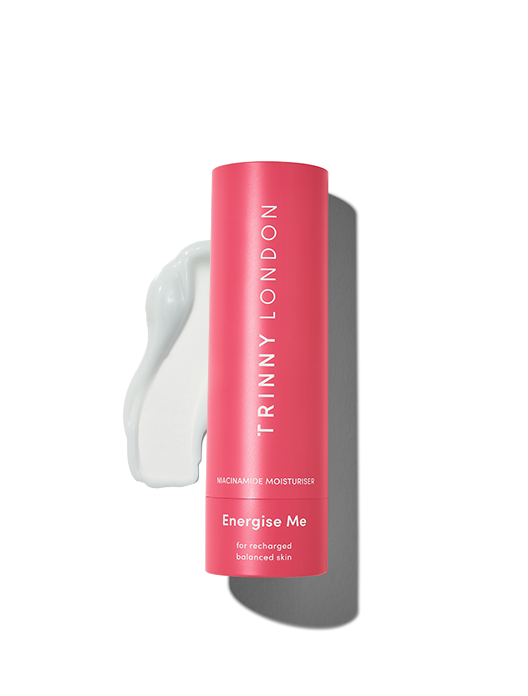
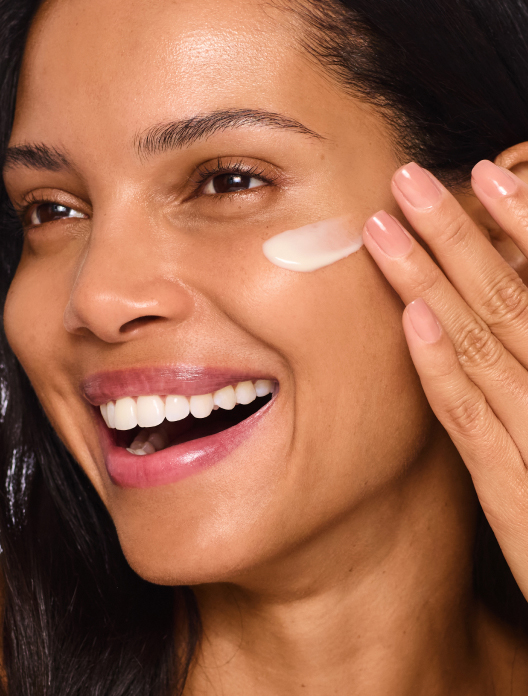
Energise Me
Niacinamide moisturiser for clear, energised skin, suitable for normal to oily skin
Get a free Effortless Glow gift set when you spend $200*

There are widely considered to be four key skin types: dry, oily, combination and normal. The eagle-eyed among you will notice that dehydrated doesn’t appear on that list, and that’s because it’s a skin state rather than a type. “Dehydrated skin is a state of the skin, rather than a setpoint that the skin has,” explains Advanced Cosmetic Doctor and skin expert, Dr Ifeoma Ejikeme. “It essentially means that the upper layers of the skin are retaining a smaller amount of moisture than they used to. It’s a feeling, so the skin may feel tight, parched or dehydrated.”
“There are many things we can do which make our skin feel dehydrated. This includes environmental factors such as the wind, very cold weather, using products that are highly exfoliating and using products that are quite drying. Even over-washing the skin by washing multiple times throughout the day or multiple times in one setting can make the skin feel dehydrated.” Dehydration is also common during the summer months, with air conditioning, low temperatures and flying by plane all playing a part.
Not sure if your skin is dehydrated? A general feeling of discomfort is one of the key signifiers. “Usually you can tell your skin is dehydrated when it often feels tight, especially after cleansing,” says Dr Ejikeme. “You may also feel that you need to re-apply moisturiser multiple times throughout the day.” In terms of appearance, dehydrated skin can look dull and flat, rather than juicy and full of life. Fine lines can also become more prominent and amplified, like creases in a starchy fabric compared to a soft, fluid silk.
As we have already established, dehydrated skin is not a skin type, so it is possible for skin to be both dry and dehydrated, or oily and dehydrated, at the same time. The key difference between dry and dehydrated skin is that dry skin is lacking in oil, while dehydrated skin is short on water. Oily skin, by comparison, has an excess of sebum, and it is entirely possible to have a surplus of sebum and a lack of water. “Whether your skin is dry or oily it can feel dehydrated,” explains Dr Ejikeme. “It’s a state that can come and go.” It makes sense then, in these instances, that you might not immediately notice dehydration in the skin, if its signs are masked by the symptoms of dry or oily skin.
The question of whether drinking water can help with dehydration in the skin is not entirely straightforward. But, there is evidence to suggest that drinking the recommended amount of water per day (six to eight glasses in the UK) can help support hydration and elasticity levels in the skin.
“If you are lacking water generally, your skin can also feel dehydrated,” explains Dr Ejikeme. “On the other hand, if you drink lots and lots of water, it doesn’t necessarily mean that your skin will feel more hydrated. It is often a balance with lots of things going on. That means drinking more water, but also placing the right kind of products on our skin that pull water in and the right kind of moisturiser to seal that water.” Ultimately, the most important thing is making sure you’re taking on enough water to support your body as a whole. Drinking water alone is unlikely to be enough to rehydrate your skin, so doubling down with topicals too is the best approach.
The good news is that dehydrated skin is very easy to treat.
Going gung-ho and piling on actives like alpha-hydroxy acids and retinoids without due consideration for your skin is one route to dehydration. These efficacious ingredients should be incorporated into your routine slowly, and layered with care, to avoid overwhelming the skin. Go too far, and you can damage the skin’s barrier function, causing much-needed water to escape through the cracks. Same goes for over-cleansing. Aim for no more than a double cleanse in the evening, and a single in the morning. If this is still too much for your skin to tolerate, consider swapping to a gentler cleanser.
The phrase “you are what you eat” is so much more than a passing platitude. In fact, it’s a crucial mantra to remember when considering your diet. “The best way to tackle dehydration in the skin is thinking about keeping the skin as healthy as it possibly can be,” says Dr Ejikeme. “That means making sure you’re eating a rainbow diet (with as many different colours of fruit and vegetable as possible) and giving your body all the nutrition it needs. Making sure that you’re also hydrating with 1.5 to 2 litres of water a day is ample for the body.”
Unbeknownst to us, and invisible to the naked eye, our skin is under siege every time we leave the house. Things like pollution, UV rays and cigarette smoke all generate free radicals – unstable molecules that damage healthy skin cells by causing them to oxidise. These pesky radicals can exacerbate the signs of dehydration in the skin, so it’s sensible to protect against them. “Try picking antioxidants that prevent the free radical damage which can make the skin feel dry,” advises Dr Ejikeme. Popular antioxidants include vitamin C and vitamin E, both of which sacrifice themselves in order to shield our skin from the damaging effects of free radicals.
Humectants, like [hyaluronic acid] and glycerin, are great ingredients for dehydrated skin. They work like greedy moisture magnets, attracting water from the atmosphere, drawing it into the skin and holding it there. They can work quite quickly, so you should see that skin feels more comfortable, and looks plumper, almost instantly.
Shopping for skincare by your skin type is especially important when it comes to cleansers and moisturisers. Go too heavy with your moisturiser, and skin can feel suffocated, or too light, and skin can’t take enough hydration from it. “Pick a moisturiser that’s suited to your skin type with a mixture of hydrators that will pull moisture to the skin, and emollients to lock in moisture,” says Dr Ejikeme. “If you have very dry skin, you might want an occlusive to sit above the skin too.”
UV exposure can dehydrate our skin, which is why you can notice your skin feels extra thirsty during the summer or after a holiday. A daily sunscreen can help to limit the impact of UV rays on our skin, especially if it has humectants within it. Commit to this as the final step in your daily skincare routine, and aim to wear it all year round – even when the sun isn’t shining.
Shop the article


Niacinamide moisturiser for clear, energised skin, suitable for normal to oily skin
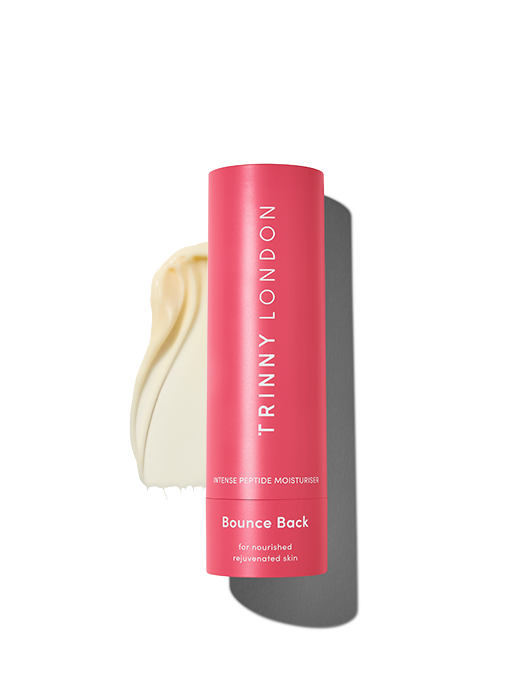
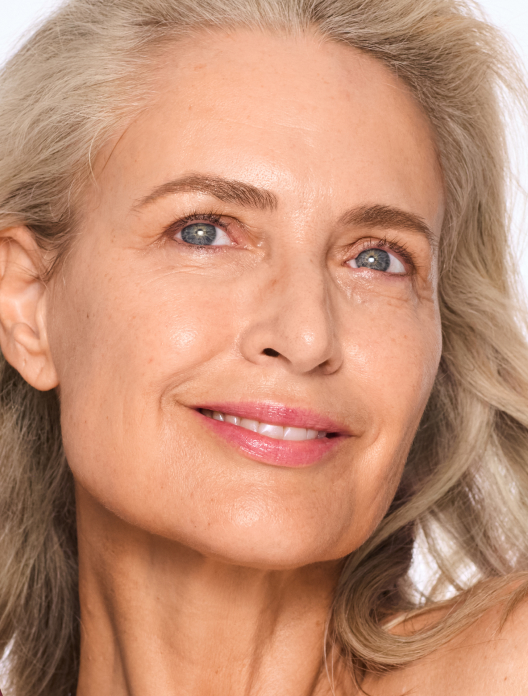
Intense peptide moisturiser for plump, bouncy skin, suitable for normal to dry skin



 5 shades
5 shades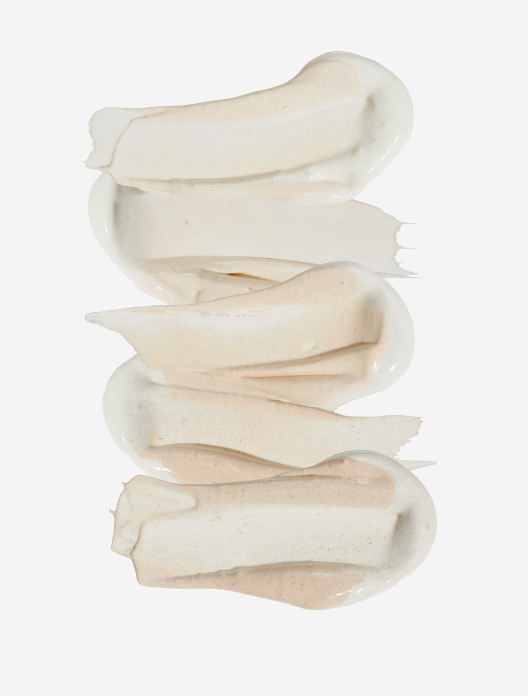
SPF 30 to protect, perfect and give skin a healthy glow
Choose shade
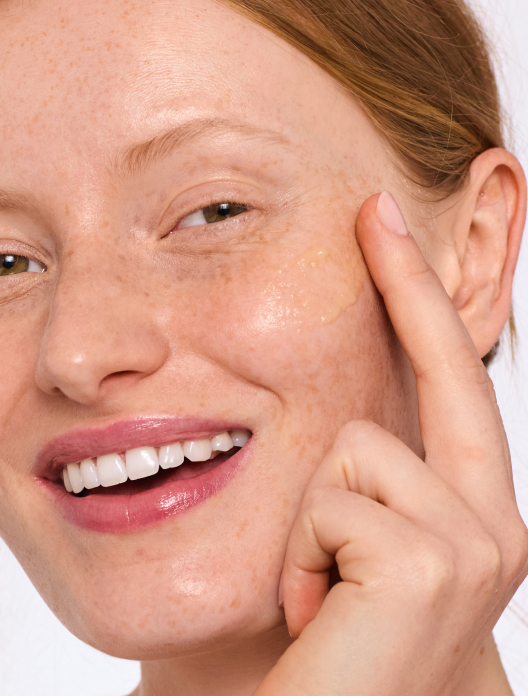
30% vitamin C serum for visibly brighter, glowing skin, suitable for highly experienced skincare users (not for sensitive skin)